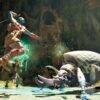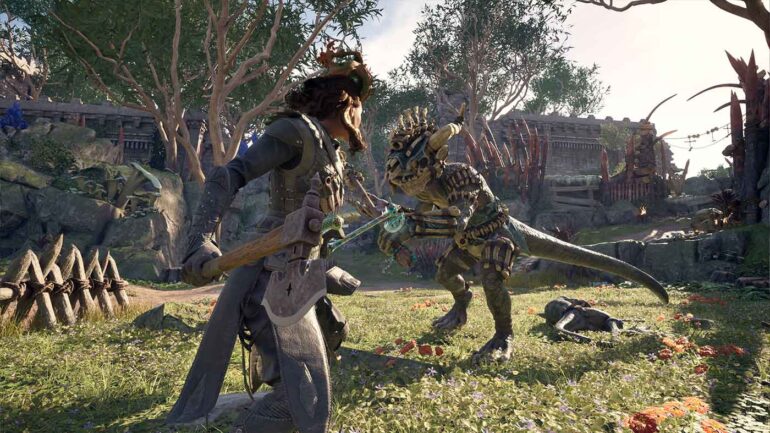If our first hands-on with Avowed back at PAX Australia served to swiftly initiate us with the game’s core loop and combat mechanics, this week’s most recent two-hour serving feels more like a grand introduction to the Avowed story, characters, and world—all of which call the Pillars of Eternity franchise home. However, as I’ve said before, this game, which remains dense and tactical in other, more user-friendly ways, will be seen as the most accessible gateway into Eora, through its northernmost continent The Living Lands.
With that said, when you’re dealing with a grand role-playing adventure like this, two hours doesn’t feel like an enormous helping. Even if Avowed is a more truncated title when compared to huge undertakings like The Elder Scrolls and Baldur’s Gate, what we got to see felt like a scene-setting more than anything else.
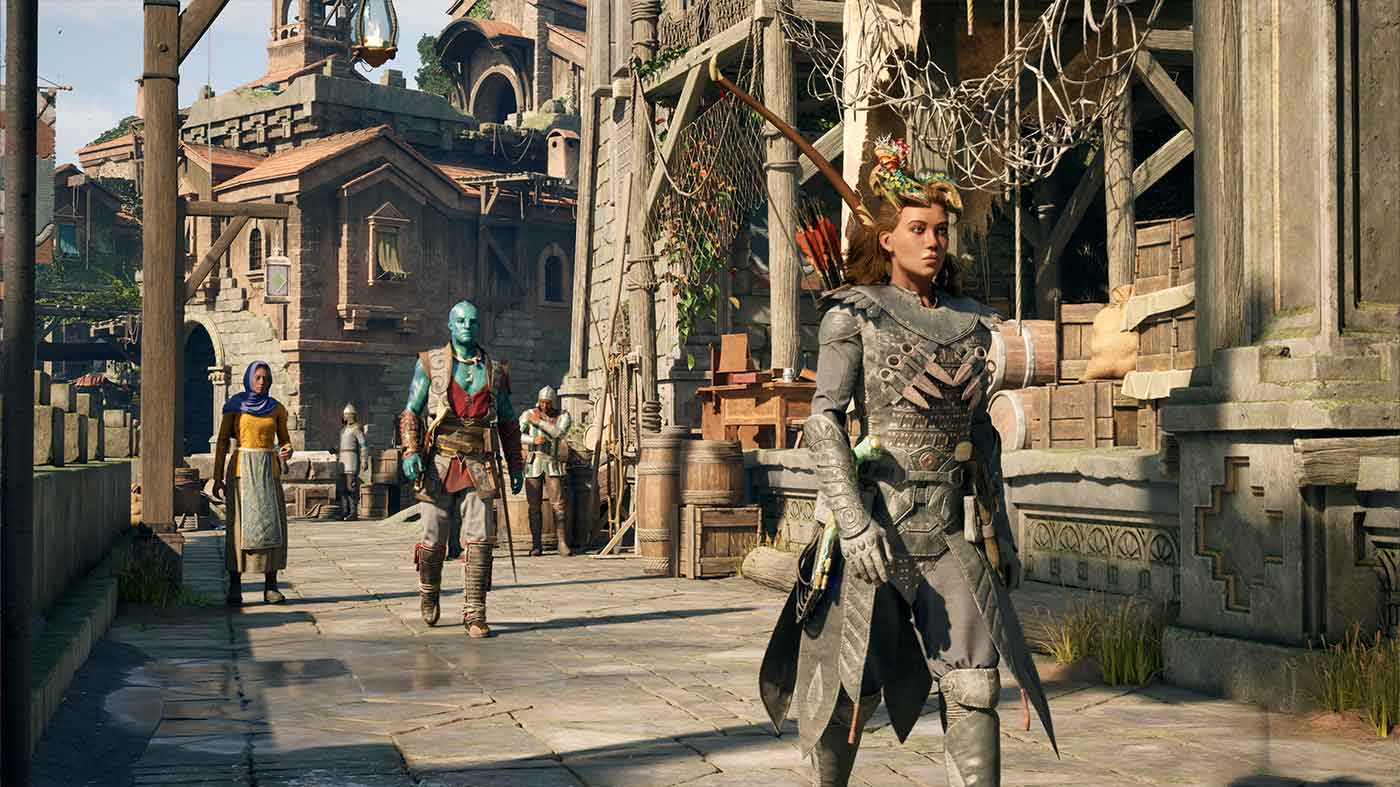
First, we got to dive into the game’s character creator, which we hadn’t seen any of in our prior go around. I wouldn’t say the options are exhaustive, ultimately I did settle on a mixture of presets in creating my own Envoy. To add a little extra bit of flair to my character, who’s billed as a “godlike” in this canon, I adorned her face with a smattering of Dreamscourge fungi in attempt to recreate just a sliver of the game’s now iconic, colourful, Alex Garland’s Annihilation-esque key art.
We were then thrust into the game’s prologue which sees our Envoy navigate being shipwrecked on an island neighbour to Paradis, where you’d been directed by an Aedyran emporer to investigate and placate the Dreamscourge plague before it spreads like wildfire. Known for twisting the souls of people, fauna, and the land itself, if left unchecked the plague would surely spell the end for The Living Lands.
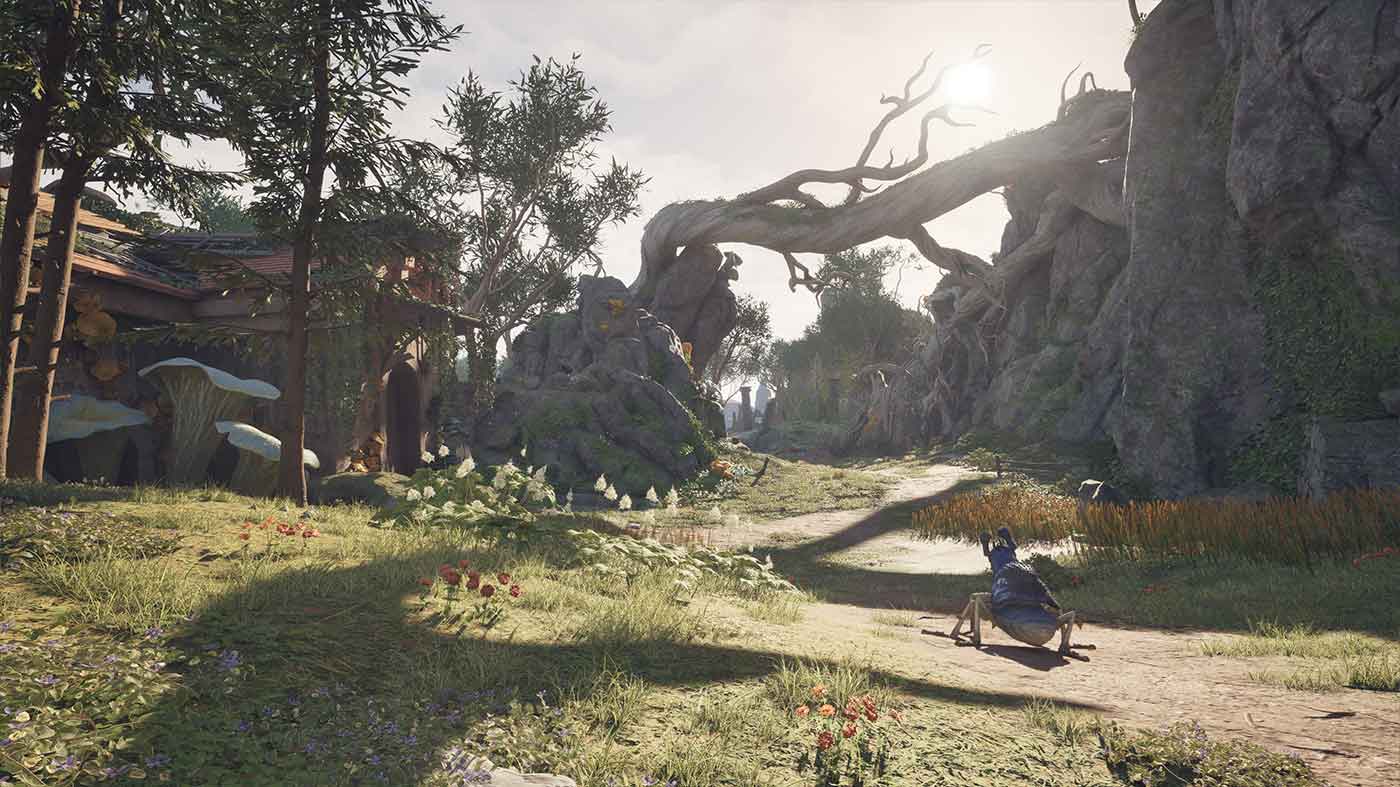
This small island is a punchy mission that does a great job at onboarding the player to the game’s front-facing mechanics, namely its free-wheeling, classless combat that refuses to pigeonhole players into the regular archetypes. Getting a bit more of an overview with this slightly broader hands-on, I came away with an even greater appreciation for how user-friendly this approach to combat is, especially for a role-playing game teeming with options.
Being able to switch on the fly between two unique loadouts by a simple button press, I’d artfully swap out my axe and shield combination for a handier-at-range, two-handed bow that I’d pick off reptilian xaurips with. And once I’d gotten my hands on a grimoire book, which introduces wieldable magic into the fold, I ran it alongside a short sword with the thought of keeping a careful distance and peppering enemies with alternating bursts of fire and ice. It’s flexible, and it surprised me quite a bit how I continued to enjoy each combat encounter here—especially after coming away from the last hands-on interested but somewhat unconvinced.
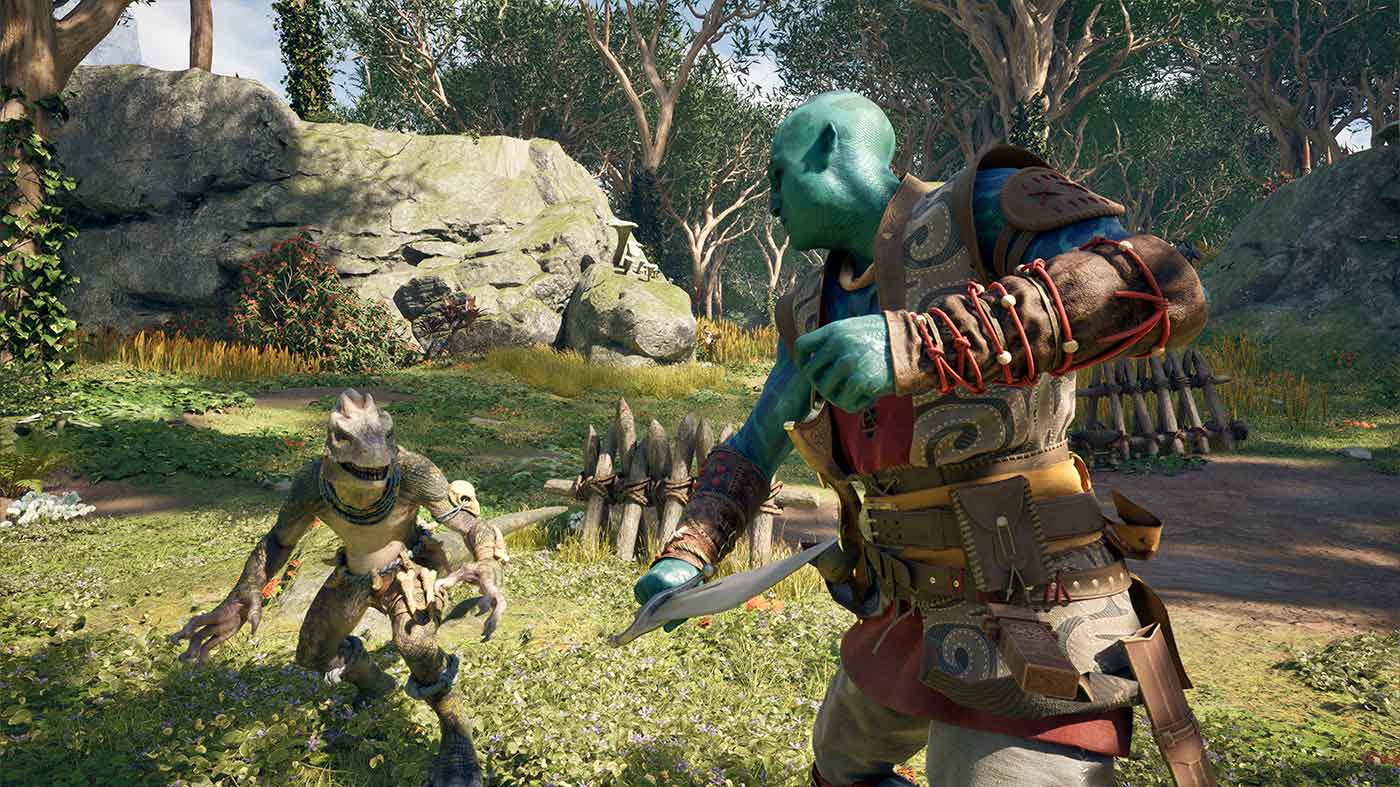
Aided by a stout, blue creature that’s sure to drive the furries mad, I made short work navigating this island aside while the game introduced me to some of its role-playing flavours, namely the art of beautifully-written conversation and the moral conflicts you’re faced with. Here, it was whether to trust a self-proclaimed enemy to the Aedyran empire and hope that it was truth, as well as survival instinct, backing her promise of having a waiting boat to escape on. Being a big believer in second chances, I found the key to her prison cell, freed her, and was pleasantly surprised to eventually be sailing toward Dawnshore in her company. It was after I docked here that we parted ways, but I wouldn’t be destined to be alone for long at all.
Waiting on the dock for me was a messenger, who broke the news to me that the Aedyran ambassador I’d hoped to meet had gone walkabout and would be in certain need of rescuing. Alongside the messenger was Kai, the very same companion I’d paired up with previously who had his own vested interest in tagging along, and it wasn’t long until we were off. It was at this stage I decided to peek behind the curtain and trawl the menus a little bit, which isn’t something I got a huge chance to do last time.
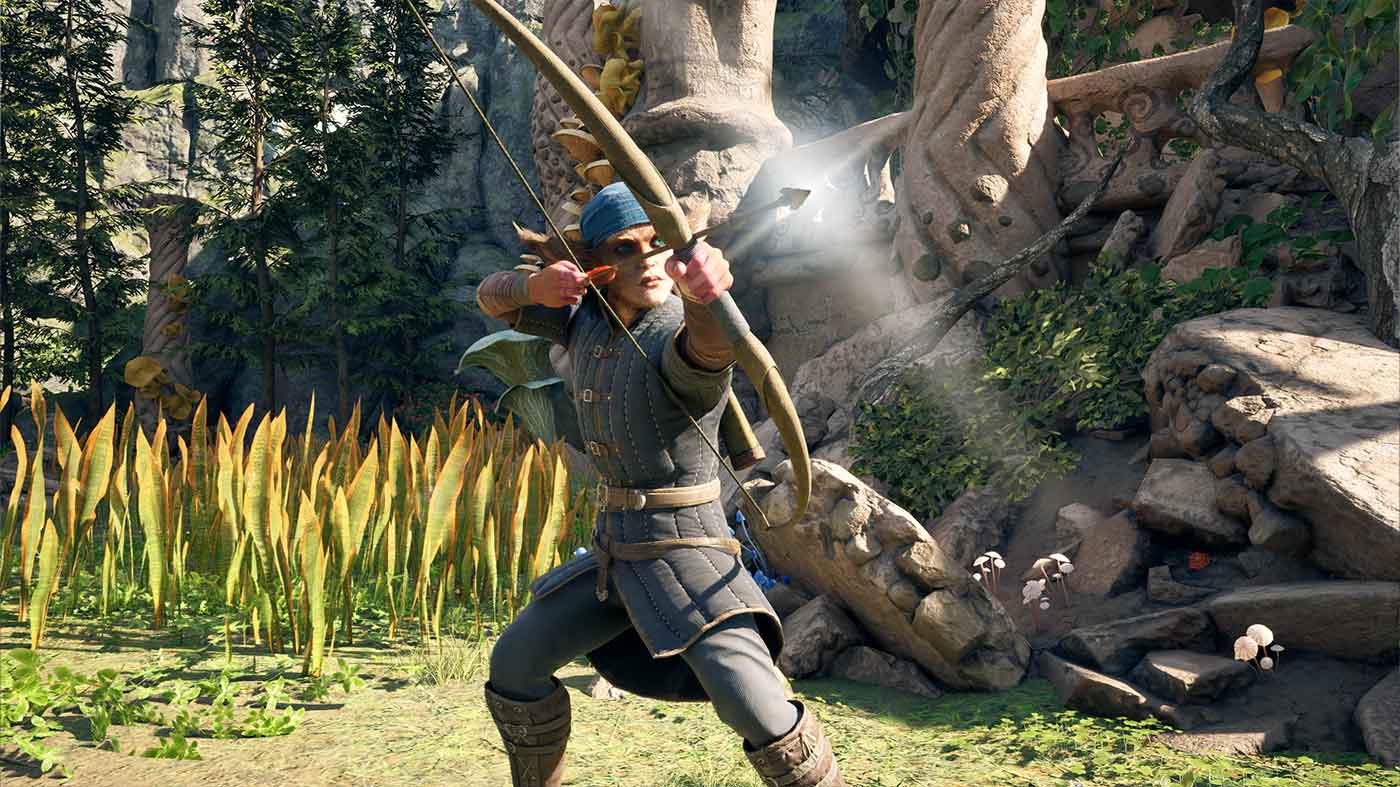
Of course, there’s an inventory to manage, I’d already made note of the endless possibilities as far as loadouts go. As you climb in level and experience, you’ll earn skill points that can be funnelled in any of the character classes available, whether that’s ranger, wizard, or otherwise. Along with the ability to change out weapons regularly, it’s the steel and sorcery cocktails you’re able to mix with these skills that adds yet another fold to the game’s classless combat. Kai had his own, pruned upgrade path that had fewer, but arguably more significant, skills that greatly improved his helpfulness in the field.
Before we could leave the townsquare in search of my ambassador friend, an irresistible exclamation point above a distressed citizen’s head lured me in: standard side quest fare. She rambled, barely coherent, about helping rid her home of the same kind of lizardfolk I’d encountered on the island not ten minutes ago. Unable to resist a bit of side action, I took a short detour to clean house, quite literally, only to discover confusing murals that spoke to a relationship of sorts between her and these squatters. Needless to say, I ended the quest far more curious about this world and its people than when I began.
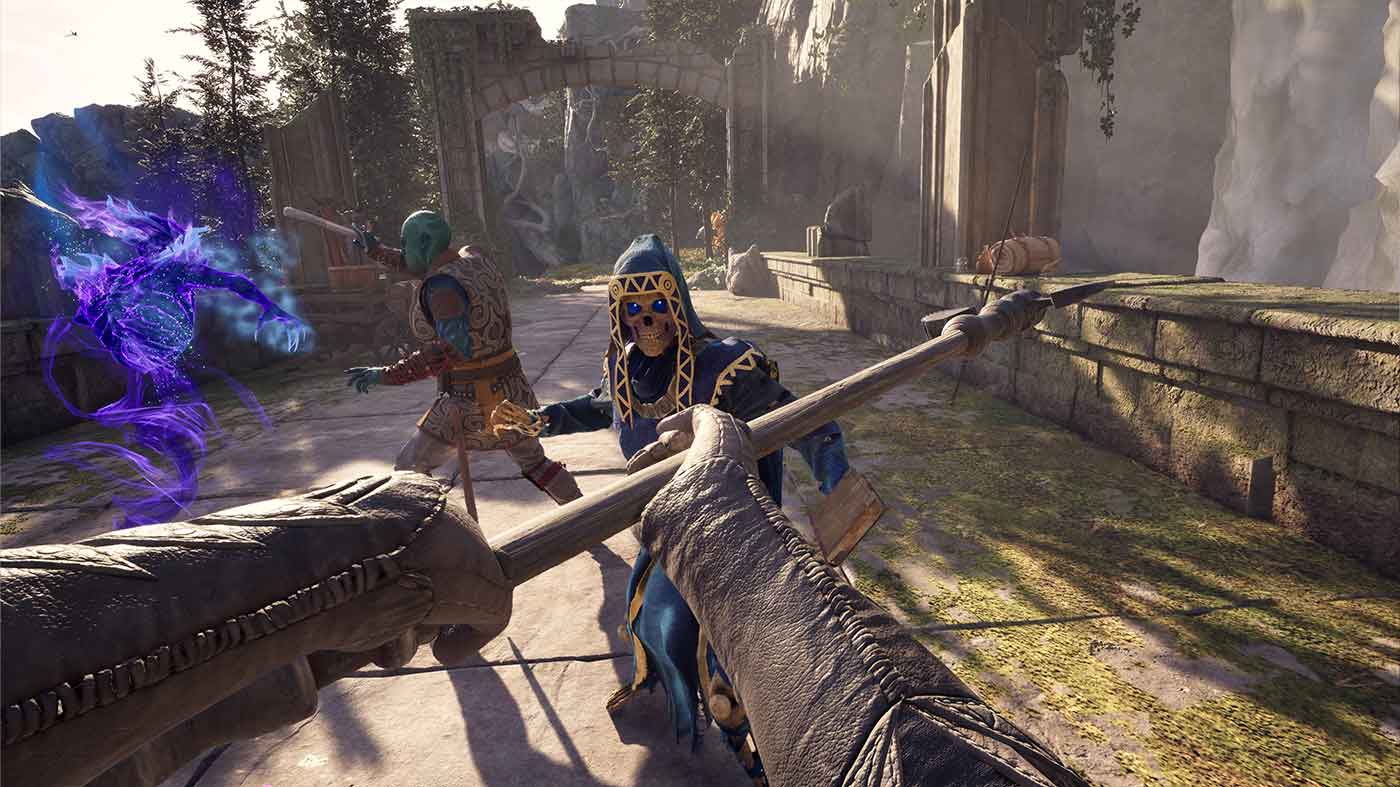
At last, I ventured onward. I came to a gorgeous, well-lit wood overrun with the same kind of fungi I’d seen all over, sure signs of the Dreamscourge lying in wait. I was glad to get a glimpse at the corruptible nature of the plague and how it can warp nature, as we encountered a powerful bear that had fallen victim to the infection. With its distinct mushroom crown, it charged over and over, making use of its powerful claws to kill me once. In our first demo, it felt as though most of the enemies were skeletons with somewhat predictable patterns, whereas this bear felt wild. I managed to fall the beast on a second pass, saving the day for the poor ambassador.
While I got a much bigger glimpse at the the combat really feels, and how loadouts work hand-in-hand with Avowed’s approach to its classless combat, free of borders, I think what I came away most pleased with is how familiar the game feels as a western role-playing game. It’s quest design immediately feels like home, and it’s so Elder Scrolls-coded that it’s like slipping into a comfy pair of slippers.
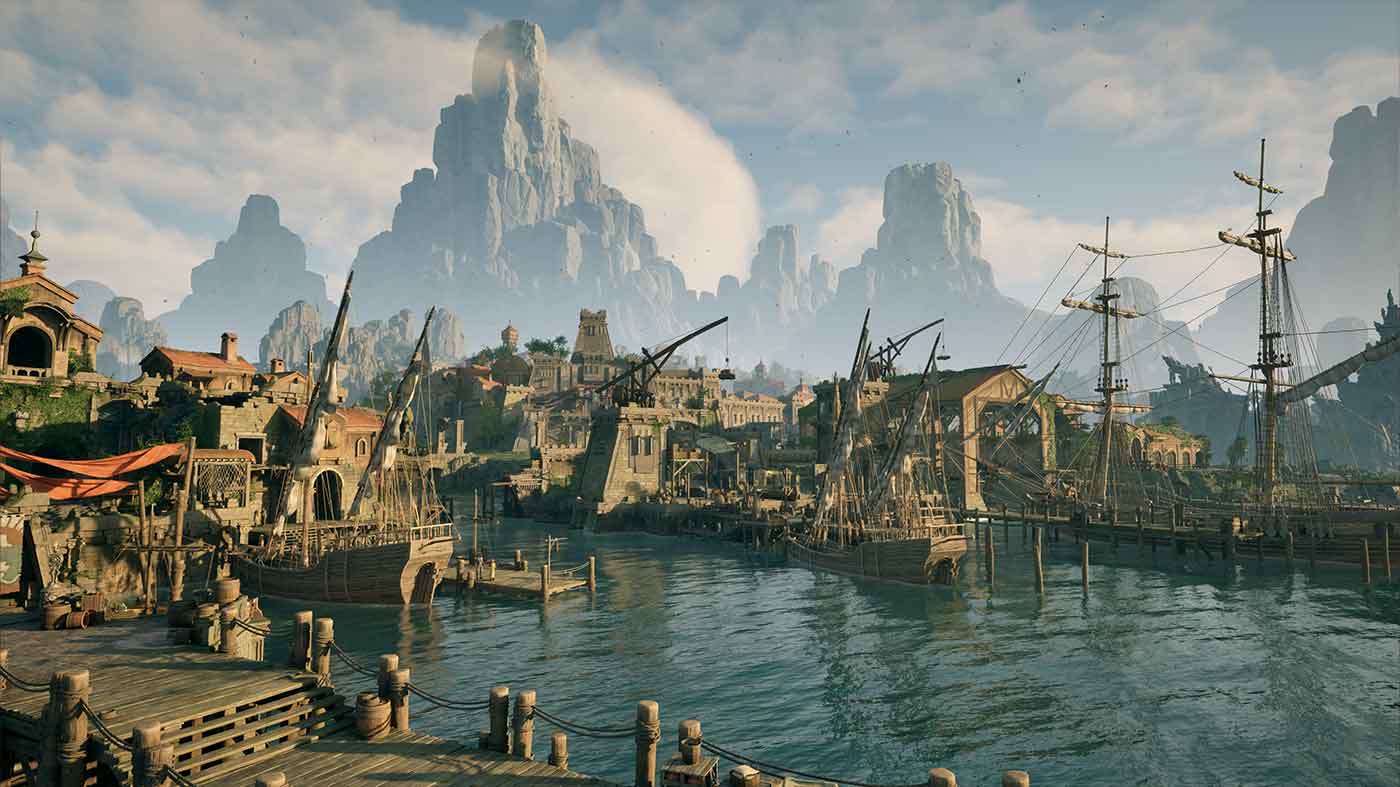
I’m also pleased with the direction of the story, especially as someone with no prior understanding of Pillars and its inner-workings. Being able to pull from an already rich bible of lore is great in that the team has an enormous library to pull from, while I, as the player, can lean on it too if, for whatever reason, something isn’t explained plainly to me. There’s a complicated political climate in The Living Lands that’s intoxicating and I’m so eager to peel back its several layers in just a few short months.
